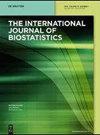利用模糊聚类从 RNA-seq 数据中检测差异表达基因
IF 1.2
4区 数学
Q4 MATHEMATICAL & COMPUTATIONAL BIOLOGY
引用次数: 0
摘要
通常对 RNA 测序数据进行两组比较测试,以检测差异表达基因(DEG)。然而,由于样本量较小,这种方法的准确性较低。为了解决这个问题,我们提出了一种使用模糊聚类的方法,该方法可人为生成与 DEGs 表达模式相似的数据,从而识别出极有可能与初始聚类数据归入同一聚类的基因。拟议方法的优势在于无需进行任何测试。此外,即使样本量存在偏差,也能保持一定的准确性,而且我们发现这种情况可能会提高拟议方法的准确性。我们通过模拟比较了建议方法和传统方法。在模拟中,我们改变了样本量以及 DEGs 中第 1 组和第 2 组表达水平的差异,以获得建议方法所需的准确度。结果表明,在模拟条件下,建议的方法在所有情况下都更胜一筹。我们还发现,当样本量有偏差时,组 1 和组 2 之间的差异对准确度的影响更为突出。本文章由计算机程序翻译,如有差异,请以英文原文为准。
Detecting differentially expressed genes from RNA-seq data using fuzzy clustering
A two-group comparison test is generally performed on RNA sequencing data to detect differentially expressed genes (DEGs). However, the accuracy of this method is low due to the small sample size. To address this, we propose a method using fuzzy clustering that artificially generates data with expression patterns similar to those of DEGs to identify genes that are highly likely to be classified into the same cluster as the initial cluster data. The proposed method is advantageous in that it does not perform any test. Furthermore, a certain level of accuracy can be maintained even when the sample size is biased, and we show that such a situation may improve the accuracy of the proposed method. We compared the proposed method with the conventional method using simulations. In the simulations, we changed the sample size and difference between the expression levels of group 1 and group 2 in the DEGs to obtain the desired accuracy of the proposed method. The results show that the proposed method is superior in all cases under the conditions simulated. We also show that the effect of the difference between group 1 and group 2 on the accuracy is more prominent when the sample size is biased.
求助全文
通过发布文献求助,成功后即可免费获取论文全文。
去求助
来源期刊

International Journal of Biostatistics
MATHEMATICAL & COMPUTATIONAL BIOLOGY-STATISTICS & PROBABILITY
CiteScore
2.10
自引率
8.30%
发文量
28
审稿时长
>12 weeks
期刊介绍:
The International Journal of Biostatistics (IJB) seeks to publish new biostatistical models and methods, new statistical theory, as well as original applications of statistical methods, for important practical problems arising from the biological, medical, public health, and agricultural sciences with an emphasis on semiparametric methods. Given many alternatives to publish exist within biostatistics, IJB offers a place to publish for research in biostatistics focusing on modern methods, often based on machine-learning and other data-adaptive methodologies, as well as providing a unique reading experience that compels the author to be explicit about the statistical inference problem addressed by the paper. IJB is intended that the journal cover the entire range of biostatistics, from theoretical advances to relevant and sensible translations of a practical problem into a statistical framework. Electronic publication also allows for data and software code to be appended, and opens the door for reproducible research allowing readers to easily replicate analyses described in a paper. Both original research and review articles will be warmly received, as will articles applying sound statistical methods to practical problems.
 求助内容:
求助内容: 应助结果提醒方式:
应助结果提醒方式:


